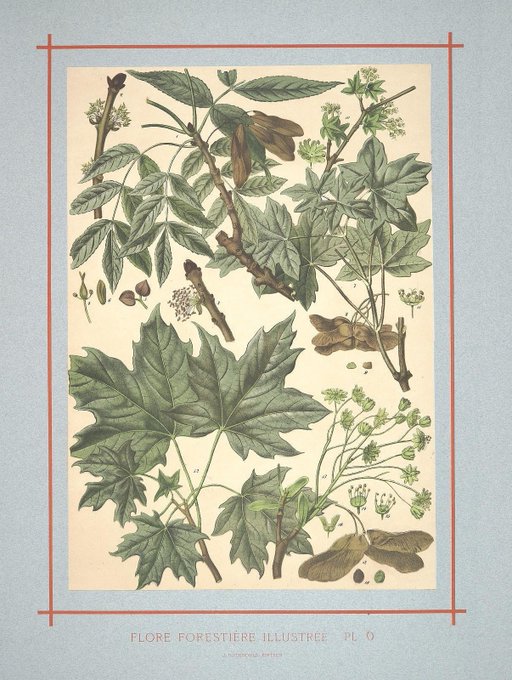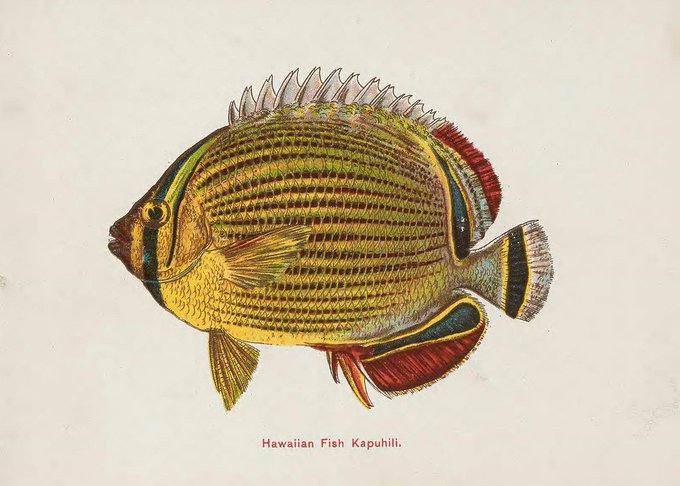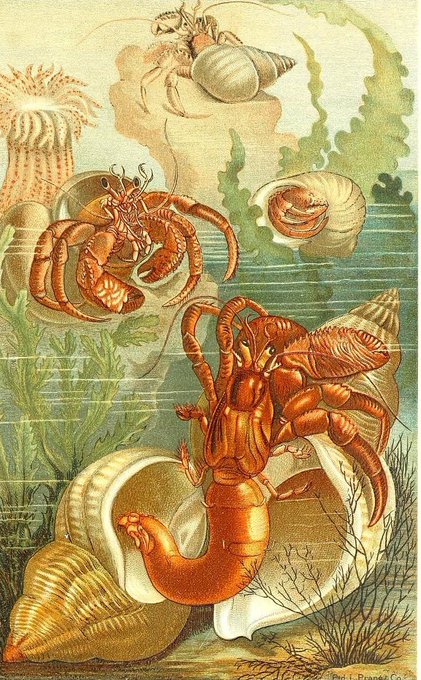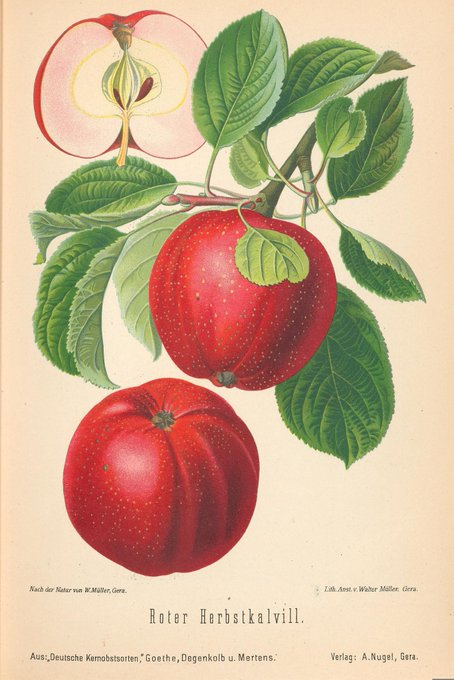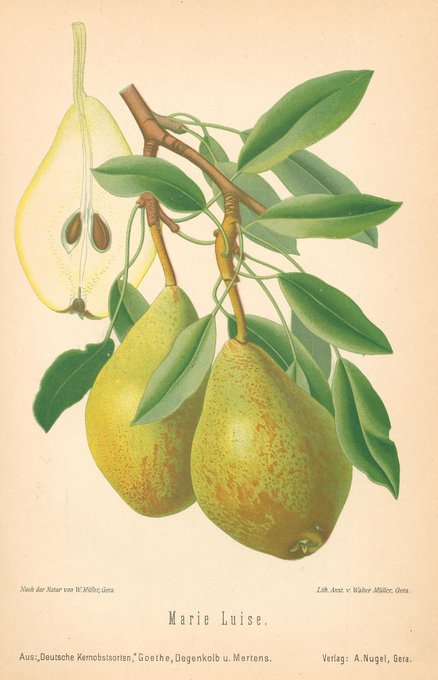chromolithographのTwitterイラスト検索結果。 150 件中 5ページ目
Photograph of chromolithograph titled, "Indian woman floating lamps on Ganges," by William Simpson (1823-1899) Date: 1867
said to be from @britishlibrary
depicts what Goddess Ganga is for us in Bharat
with hope optimism we lit that deepak & flow it with prayer
bless all
For the month of October, we present wood engravings, photogravures, and chromolithographs from the October 1905 issue of the early 20th-century periodical 'Flora and Sylva, A Monthly Review for Lovers of Gardens, Woodland, Tree or Flower.' View more here: https://t.co/zJxlusRoro
With Autumn comes the harvesting of many crops.
Which of these have you grown this year?
These images come from nursery catalogues and chromolithographic plates in our collection.
#Autumn #autumngardendays #Harvest
Vintage illustration of a wide variety of fruits and vegetables from Nouveau Larousse Illustre (1898) by Larousse, Pierre, Augé and Claude. Digitally enhanced from our own antique chromolithograph.
DL here: https://t.co/pO9IkFlIUw
Meehan's "The Native Flowers and Ferns of the United States" (1878-79) presented a selection of indigenous US plants, with chromolithographs by L. Prang & Company after #SciArt from life by Alois Lunzer. In #BHLib via @MBLWHOILibrary ➡️ https://t.co/4rHIueQXY0 #BotanicMonday
Lilford's "Coloured Figures of the Birds of the British Islands" (1885-97) was illustrated with over 400 chromolithographic plates mostly after artworks by Archibald Thorburn & John Gerrard Keulemans. Explore all 7 volumes for #Feathursday via @AMNH ➡️ https://t.co/3nfxlY30OO
"Flore forestière" (1872) by Charles de Kirwan (then a sub-inspector of forests in France) describes the trees and shrubs of Europe. It is illustrated with 18 chromolithographs depicting 350 figures. Explore it in #BHLib via @mobotgarden ➡️ https://t.co/w8ElEJkJwj
This plate from Die Käfer Europas [595.72 Sch] displays numerous #colourful #beetles that may be familiar #garden visitors or seen out & about among #wildflowers. How many do you recognise? #WildWebsWednesday #biodiversity #WildlifeWednesday #sciart #chromolithography #insects
Today is #WorldLizardDay, a day to celebrate this enormous group of squamate reptiles that includes over 6,000 species. Today we bring you chromolithographs of just a few of them from volume one, part 3 of the 1882-84 edition of 'Brehms Thierleben.' More: https://t.co/07TjwNzE0o
New to the #BHLib Flickr and perfect for #FishyFriday — "Hawaiian Fishes", featuring 12 beautiful chromolithographs of tropical sea fish found near the Hawaiian islands. Digitized by @SILibraries. Uploaded to Flickr by @NYBG. Explore it today ➡️ https://t.co/AxxmiRMI29 🐠🐡
The Parting - "Buy us too"
Henry Louis Stephens
Prints, Chromolithograph
American, 1863
Today we present decorative plates from 'Masterpieces of Industrial Art & Sculpture at the International Exhibition, 1862' selected and described by J. B. Waring (John Burley Waring) and chromolithographed by and under the direction of W. R. Tymms, A. Warren, and G. Macculloch.
Today is the day we celebrate the Serpentes, those long, scaly, cold-blooded, legless squamates. In celebration, we present a few chromolithographs and wood engravings of snakes doing what snakes do: threatening, crushing, swallowing things, and just hanging out, looking cool.
The color illustrations are by Walter Hood Fitch, a prolific botanical illustrator who also produced chromolithographs for 'Curtis’s Botanical Magazine.' #WednesdayBouquet Learn more here: https://t.co/8H4U6PBEXN
For the month of June, we present wood engravings, photogravures, and chromolithographs from the June 1905 issue of the early 20th-century periodical 'Flora and Sylva, A Monthly Review for Lovers of Gardens, Woodland, Tree or Flower.' Learn more here: https://t.co/JRILIQUv0I
"Our Living World; An Artistic Edition" (1885) featured chromolithographs by the renowned firm of Louis Prang. Prang is sometimes called "father of the American Christmas card". Explore the work in #BHLib thanks to @IllinoisLibrary ➡️ https://t.co/zgJL1fXcTu #SciArt
If you’re looking for inspiration for your vegetable patch this #NationalGardeningWeek, @RHSLibraries can help! Why not visit our Research Room to view Album Benary, published from 1876-1882, with its beautiful chromolithographs of heritage vegetables? #EdibleBritain
Today we present decorative plates from 'Masterpieces of Industrial Art & Sculpture at the International Exhibition, 1862' selected and described by J. B. Waring. Learn more about these chromolithographs here: https://t.co/qZxRz1U5Lv
"Äpfel und Birnen" (1894) described 53 varieties of apples & 51 types of pears. It includes 104 chromolithographs by Walter Müller depicting the whole fruit with branch & leaves and a cross-section. In #BHLib via @Mann_Library @Cornell_Library: https://t.co/tZQ7YAtU8s 🍎🍐
@solwaywalker @DublinDeadZoo @PaoloViscardi Blaschka anemones are not solely based on Gosse chromolithographs (less than 50%) but mainly on the US exploring expedition





















